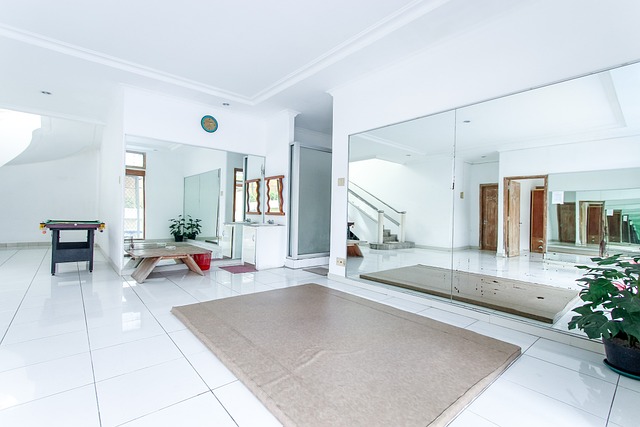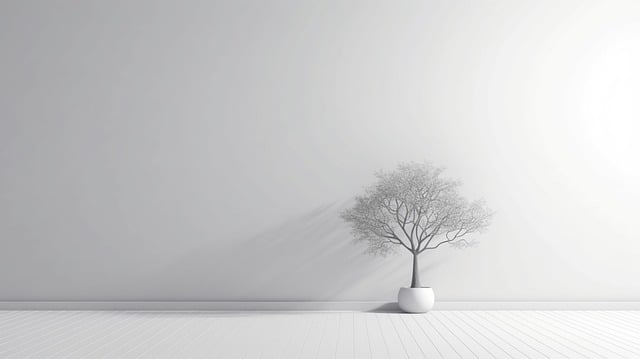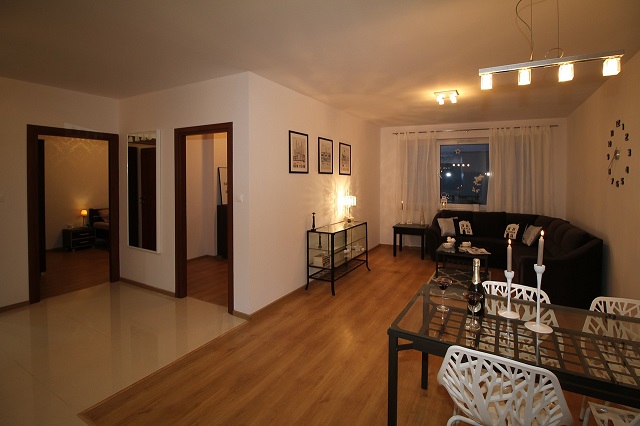Table of Contents
What is Skim Coating?
A skim coating is a thin layer of plaster or joint compound that is applied to smooth out the surface of a wall or ceiling. It is typically used to cover up imperfections such as rough patches, bumps, or texture differences, creating a clean and uniform finish. Skim coating is a popular technique in the world of home improvement and renovation, offering a cost-effective way to refresh the appearance of a room without having to completely redo the surface.
When applying a skim coat, the goal is to achieve a smooth and flawless surface that is ready for painting or wallpapering. This process requires skill and patience, as the skim coat must be applied evenly and allowed to dry properly before any further finishing touches can be made. Skim coating is a versatile method that can be used on a variety of surfaces, including drywall, plaster, and concrete, making it a valuable tool for anyone looking to update their living space.
• Skim coating is often used to prepare walls for a fresh coat of paint or wallpaper
• It can help to hide imperfections in the surface, creating a seamless finish
• The process involves applying a thin layer of plaster or joint compound and smoothing it out evenly
• Skim coating can be time-consuming but yields professional-looking results when done correctly
Benefits of Skim Coating
Skim coating offers a smooth and flawless finish to walls and ceilings, creating a clean canvas for paint or wallpaper. This technique is especially beneficial for repairing imperfections such as cracks, dents, or uneven surfaces, resulting in a polished and professional look. By applying a thin layer of plaster or joint compound, skim coating can transform rough or damaged walls into a refreshed and like-new appearance.
In addition to improving the aesthetic appeal of a space, skim coating also enhances the durability and longevity of the walls. The added layer of plaster helps to protect the surface from wear and tear, making it easier to clean and maintain over time. Whether in residential or commercial settings, the benefits of skim coating extend beyond cosmetic enhancements, providing a practical solution for enhancing the overall quality and longevity of interior surfaces.
When to Consider Skim Coating
Skim coating is a versatile technique that can be beneficial in various situations. One instance where skim coating may be necessary is when dealing with walls or ceilings that have minor imperfections such as small dents, dings, or uneven surfaces. In such cases, skim coating can provide a smooth and flawless finish, creating a blank canvas for a fresh coat of paint or wallpaper.
Another scenario where skim coating may be considered is when renovating or remodeling a space that has outdated textures or finishes. By applying a skim coat, you can modernize the look of the walls or ceilings without the need for a complete overhaul. This can be a cost-effective way to update the aesthetics of a room and improve its overall appeal.
Materials Needed for Skim Coating
When it comes to skim coating a surface, having the right materials on hand is essential for achieving a smooth and flawless finish. Some of the basic materials needed for skim coating include joint compound, a taping knife, sandpaper, a mud pan, and a paint roller. These tools are necessary for applying and smoothing out the skim coat evenly across the surface.
In addition to the basic tools mentioned above, you may also need a drop cloth to protect the surrounding area from any splatters or drips, as well as a primer to ensure proper adhesion of the skim coat to the surface. Depending on the project at hand, you may also want to invest in a hawk and trowel for larger surface areas, and a spray bottle filled with water to help control the consistency of the joint compound. Having these materials readily available will make the skim coating process more efficient and successful.
Preparing the Surface for Skim Coating
Before applying skim coating to a surface, it is crucial to ensure that the area is clean, dry, and free of any debris. Start by removing any loose paint, wallpaper, or other materials that may impede the adhesion of the skim coating. Use a scraper or sandpaper to smooth out rough spots and create a level surface for the skim coating to adhere to.
Next, inspect the surface for any cracks, holes, or imperfections that need to be filled before skim coating. Use a suitable filler, such as spackle or joint compound, to patch up any damaged areas and create a smooth foundation for the skim coating. Allow the filler to dry completely before sanding it down to achieve a seamless finish.
Application Techniques for Skim Coating
To achieve a smooth and flawless finish when skim coating, it is essential to master the application techniques. Begin by applying a thin layer of joint compound onto the surface using a trowel or putty knife, spreading it evenly in all directions. Make sure to work in small sections to ensure an even application and avoid any visible lines or bumps. Once the first layer has been applied, wait for it to dry completely before applying subsequent layers to build up the desired thickness.
When applying each layer, remember to feather the edges by blending them smoothly into the surrounding areas to create a seamless transition. This technique helps to prevent noticeable edges and ensures a uniform surface once the skim coating is complete. Additionally, be mindful of the pressure applied when smoothing out the joint compound to avoid creating uneven spots or indentations in the surface. Patience and attention to detail are key when it comes to mastering the application techniques for skim coating to achieve professional results.
Drying Time for Skim Coating

After applying the skim coat to the surface, the drying time is a crucial aspect to consider. The time it takes for the skim coat to dry completely can vary depending on factors such as temperature, humidity, and thickness of the coat. In general, it is recommended to allow the skim coat to dry for at least 24 hours before proceeding with any further steps in the finishing process. During this drying period, it is important to maintain a well-ventilated area to aid in the evaporation of moisture and expedite the drying process.
Furthermore, it is essential to avoid any contact with the drying skim coat to prevent imperfections or disruptions in the surface. Touching or applying pressure on the drying skim coat can lead to indentations or uneven drying, resulting in a less-than-perfect finish. Be patient during the drying process and allow ample time for the skim coat to cure fully before moving on to sanding and priming the surface for its final finish.
Sand and Prime After Skim Coating
After applying the skim coat and allowing it to dry thoroughly, the next step is to sand the surface. Sanding helps to smooth out any imperfections or uneven areas left behind by the skim coating process. Use a fine-grit sandpaper to gently sand the surface in a circular motion until it feels smooth to the touch. Be careful not to sand too aggressively, as this can damage the skim coat and require additional repairs.
Once the surface has been sanded to satisfaction, it is important to prime the area before painting or applying any other finish. Priming helps to seal the surface, providing a smooth and even base for the final coat of paint or finish. Choose a high-quality primer that is compatible with the skim coat material used. Apply the primer evenly using a paint roller or brush, following the manufacturer’s instructions for drying time and additional coats if necessary. This step is crucial in achieving a professional-looking and long-lasting finish on your skim coated surface.
Common Mistakes to Avoid When Skim Coating
Skim coating may seem like a straightforward process, but several common mistakes can occur if not done correctly. One major error to avoid is not properly preparing the surface before applying the skim coat. Failing to clean, sand, and prime the surface can result in the skim coat not adhering well and leading to a rough finish. Additionally, skipping the step of filling in any cracks or holes in the surface can cause visible imperfections after the skim coat has dried.
Another common mistake when skim coating is not applying the right thickness of the skim coat. Applying a skim coat that is too thin may not effectively cover imperfections on the surface, while a skim coat that is too thick can lead to cracking and drying issues. It is essential to follow the manufacturer’s instructions on the appropriate thickness of the skim coat to achieve a smooth and flawless finish.
Cost of Hiring a Professional for Skim Coating
When it comes to the cost of hiring a professional for skim coating, several factors can influence the overall price. The size of the area to be skim coated, the condition of the existing surface, and the complexity of the project all play a role in determining the final cost. Additionally, the location of the project and the level of experience of the professional can also impact pricing. It is recommended to obtain quotes from multiple professionals to ensure you are getting a fair price for the service.
In general, hiring a professional for skim coating can range from a few hundred to several thousand dollars, depending on the scope of the project. While it may seem like a significant investment, the results of professional skim coating are typically more precise and durable compared to a DIY approach. Keep in mind that the cost of hiring a professional for skim coating is not just for the labor involved, but also for the expertise, experience, and quality of materials used to achieve a smooth and flawless finish.
DIY vs Professional Skim Coating
For individuals looking to save on costs and take on a hands-on approach, the option of tackling skim coating as a do-it-yourself project may seem appealing. DIY skim coating can be a viable choice for those with some level of experience in home improvement projects and a willingness to invest time and effort into learning the proper techniques. However, it is essential to note that skim coating is a skill that requires precision and attention to detail, which may be challenging for beginners.
On the other hand, hiring a professional for skim coating ensures a high-quality finish and saves time and potential frustrations of learning through trial and error. Professionals have the expertise, tools, and experience to complete the job efficiently and effectively. While the cost of hiring a professional may be higher than undertaking the project yourself, the end result is often smoother, more durable, and aesthetically pleasing, making it a worthwhile investment for those seeking a flawless finish.
Alternative Finishes to Skim Coating
If skim coating is not the right choice for your project, there are several alternative finishes that you can consider. One option is using drywall texturing techniques to create a textured finish on your walls or ceilings. This can add visual interest and hide imperfections in the surface, giving your space a unique look. Another alternative finish is installing wallpaper, which comes in countless designs and styles to suit any aesthetic preference. Wallpaper is a versatile option that can quickly transform a room without the need for extensive prep work.
For a more rustic or industrial look, you may want to explore the option of exposed brick or concrete finishes. These materials can be used to create a striking feature wall or accent in a room, adding character and dimension to the space. Another alternative finish to consider is using decorative paneling or wood planks to create a warm and inviting atmosphere. Paneling comes in various styles, from traditional beadboard to modern shiplap, allowing you to customize the look of your walls to fit your design vision.
Maintaining Skim Coated Surfaces
For long-lasting results, it is important to maintain skim coated surfaces properly. Regular cleaning with a gentle detergent and water can help keep the surface free of dust and grime. Avoid using abrasive cleaners or harsh chemicals as they can damage the finish. Additionally, be mindful of sharp objects that could scratch or gouge the skim coat, as these can compromise the integrity of the surface.
Another key aspect of maintaining skim coated surfaces is addressing any issues promptly. If you notice any cracks, chips, or peeling, it is essential to repair them as soon as possible to prevent further damage. Depending on the severity of the damage, you may need to consult a professional for repairs to ensure that the skim coat remains intact and continues to provide a smooth and flawless finish. Regular inspection and maintenance will help preserve the beauty and durability of skim coated surfaces over time.

